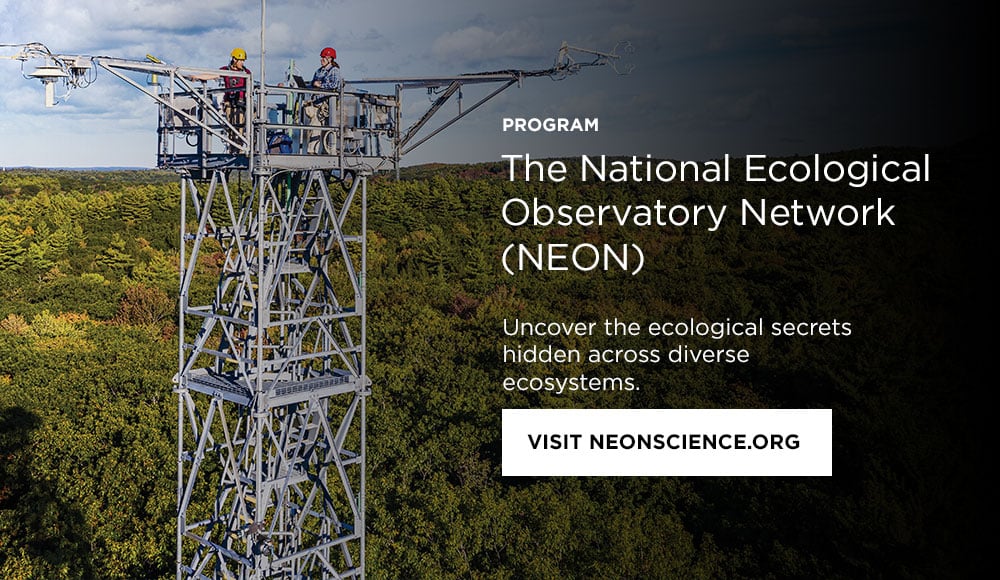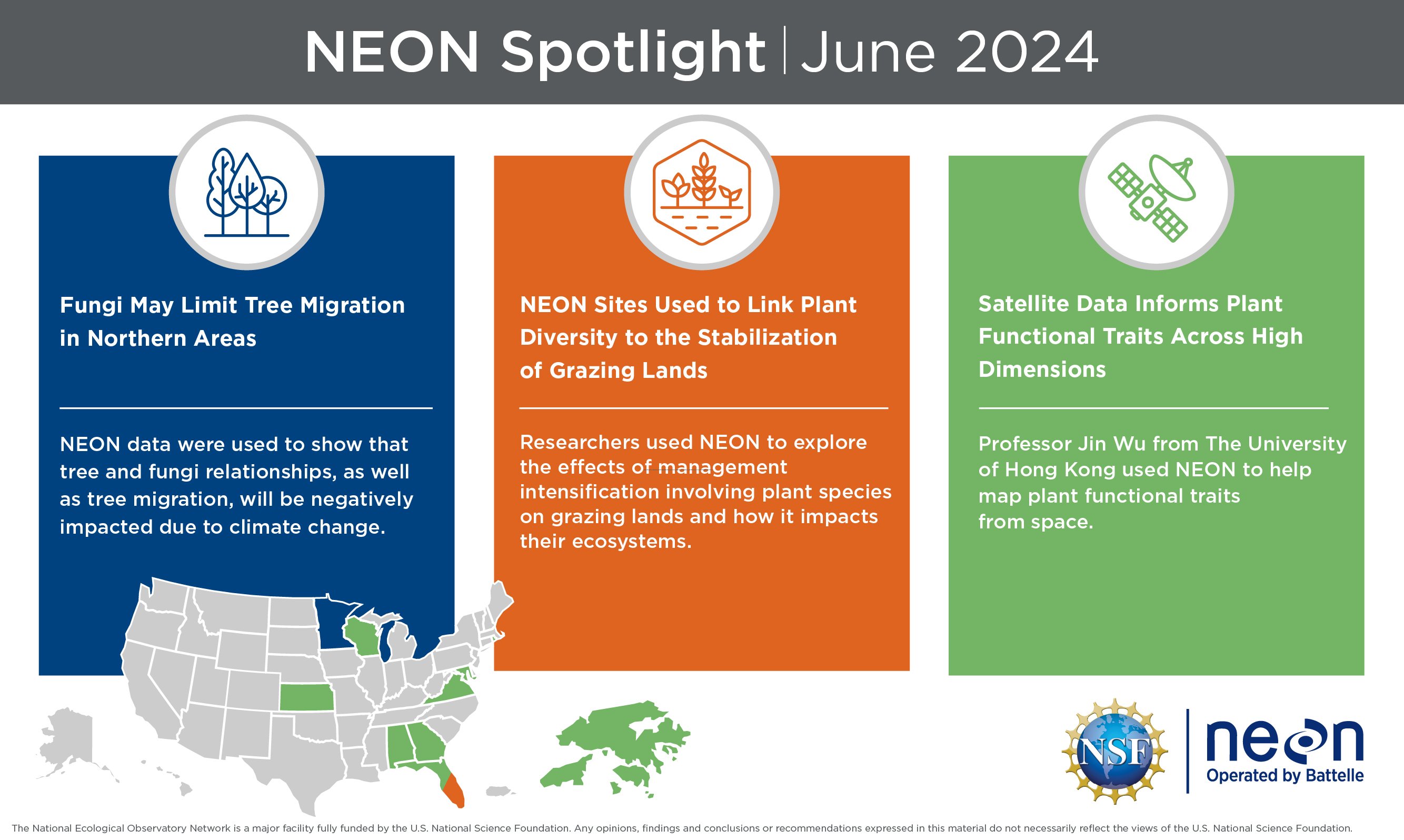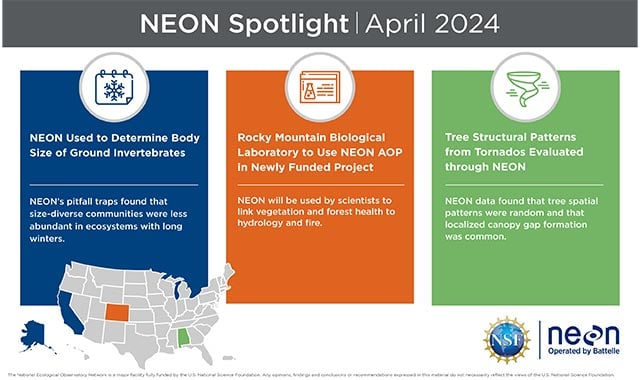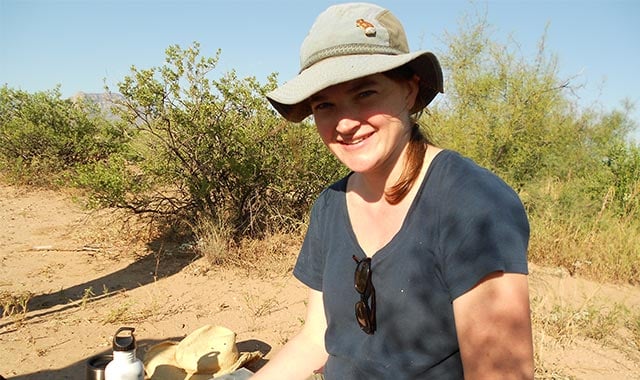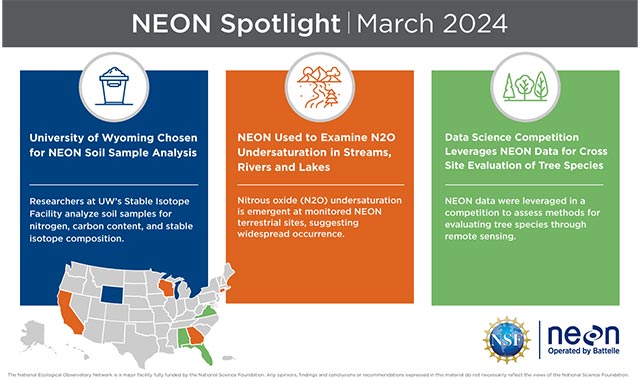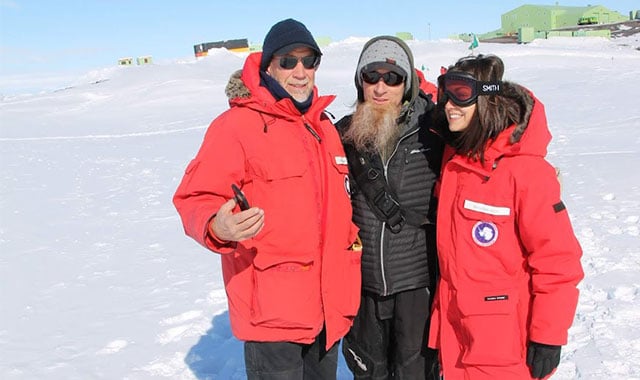April 2023 What’s New with NEON?

April’s NEON Spotlight highlights three new stories demonstrating how scientists are leveraging NEON data in their efforts to expand the capabilities of ecological science. This month, we are spotlighting how researchers are utilizing NEON to conduct space-based forest observation, investigate the effects of climate on soil, and explore the impact of the Hantavirus. NEON data continues to play a vital role in advancing our understanding of the natural world, fueling public knowledge, and sharpening our ability to tackle environmental challenges.
This Month’s Spotlight
The latest news from NEON includes:
- NEON Tower Used In Space-Based Forest Observation Project
Through the use of NEON tower sensors, NASA research scientist Jon Ranson and his team have made significant progress in their efforts to study trees from space and gained a better understanding of their impact on atmospheric carbon dioxide levels and climate change. By utilizing hyperspectral imaging technology and drones fitted with specialized cameras and equipment, the team has been able to accurately assess forest health and calculate the amount of carbon that forests remove from the atmosphere. With the goal of studying forests on a global scale, the team has developed a satellite mission concept known as CASALS, which is equipped with lidar and hyperspectral cameras to take frequent measurements of changes in forest productivity over time. In order to refine their techniques and identify sources of error, the team collected imaging data over forests in Mountain Lake, VA, and compared it with actual CO2 levels recorded by sensors on a nearby NEON tower.
- NEON Used To Assess The Link Between Organic Matter Concentration And Moisture Availability
Soil cores collected by NEON were used in a study that highlights the significance of mineral-associated organic matter (MAOM) in regulating the global carbon cycle. MAOM is crucial as it comprises the largest reservoir of carbon in soils globally. The study found that moisture availability is a major factor in determining the concentration and persistence of MAOM in soils. Specifically, in humid soils - where root abundance is greater and interactions with MAOM are more frequent - MAOM concentration and persistence are strongly linked, while this relationship is absent in drier soils. This finding suggests that soil moisture is an important factor to consider when studying soil organic matter persistence. Moreover, as climate patterns shift, the stability of MAOM may respond nonlinearly, and historical climate legacies should be considered in models of soil organic matter persistence. Understanding the dynamics of MAOM can help inform soil management practices and global carbon cycling models.
- NEON Data Used In Hantavirus Research
Virginia Tech Assistant Professor Luis Escobar has been granted an NSF Faculty Early Career Development (CAREER) award to conduct a research study using NEON data to investigate the impact of climate change on the spillover transmission of hantavirus. This virus is contracted when humans come into contact with rodent droppings. The study aims to assess the "biogeography" of the virus by integrating geographic information about rodent populations, virus occurrence data, and spillover transmission between wildlife and humans, along with broader climate and environmental factors. The research will also include parallel investigations in Chile, where annual cases of a hantavirus strain in humans are consistently reported spread by pigmy rats and long-haired grass mice droppings. Escobar will utilize some of the grant to fund student exchange programs with universities in Chile and develop and teach a pioneering course in disease biogeography. This study is essential as epidemiologists have expressed concern that hantavirus could evolve into a pandemic risk.
Sponsored by the National Science Foundation (NSF) and operated by Battelle, NEON is a continental-scale ecological observatory network dedicated to providing high-quality, consistently generated, standardized data that is free and available to all users. By enabling scientists, researchers, and students to address critical questions and understand ecosystem changes over time, the NEON program allows the ecological community to tackle questions and problems at a scale that was not possible before.
You can read about the latest work and research in the NEON Spotlight every month at Inside Battelle, and on our social media channels. For more information about NEON, visit NEONscience.org.
Related Blogs
BATTELLE UPDATES
Receive updates from Battelle for an all-access pass to the incredible work of Battelle researchers.
